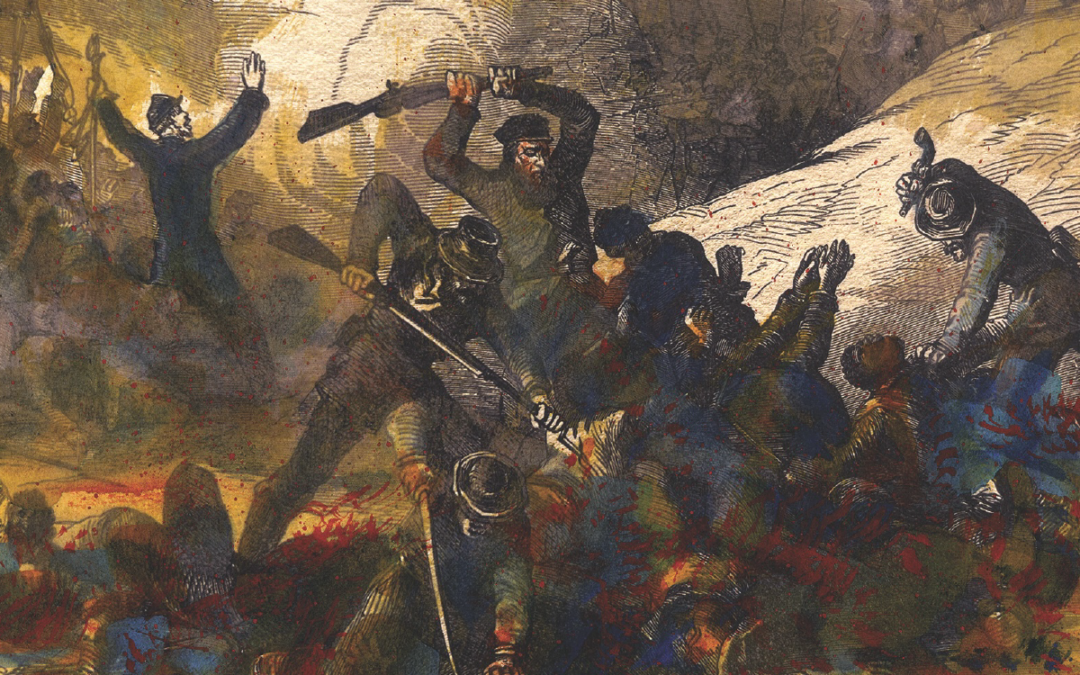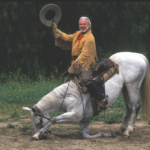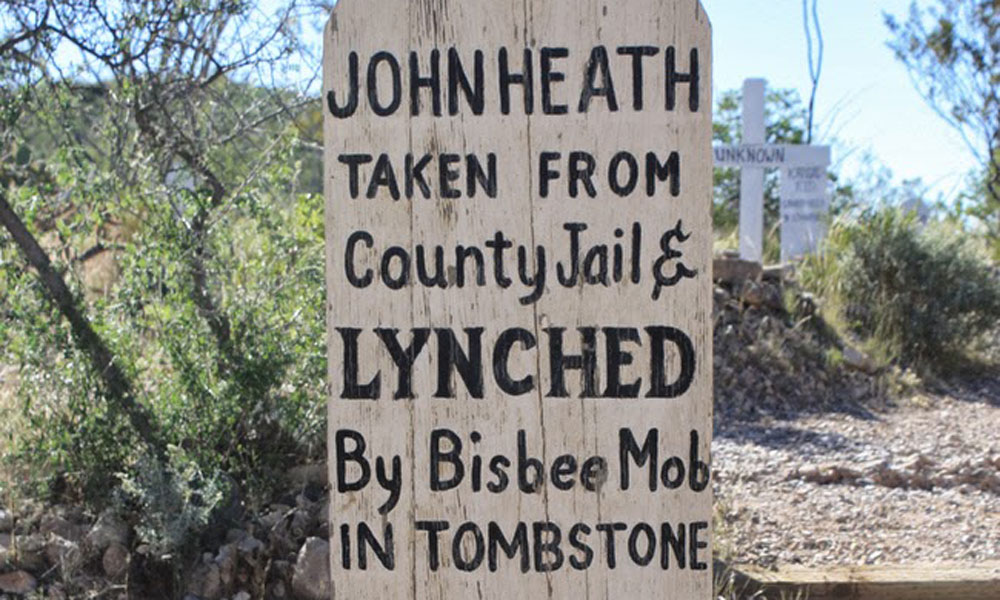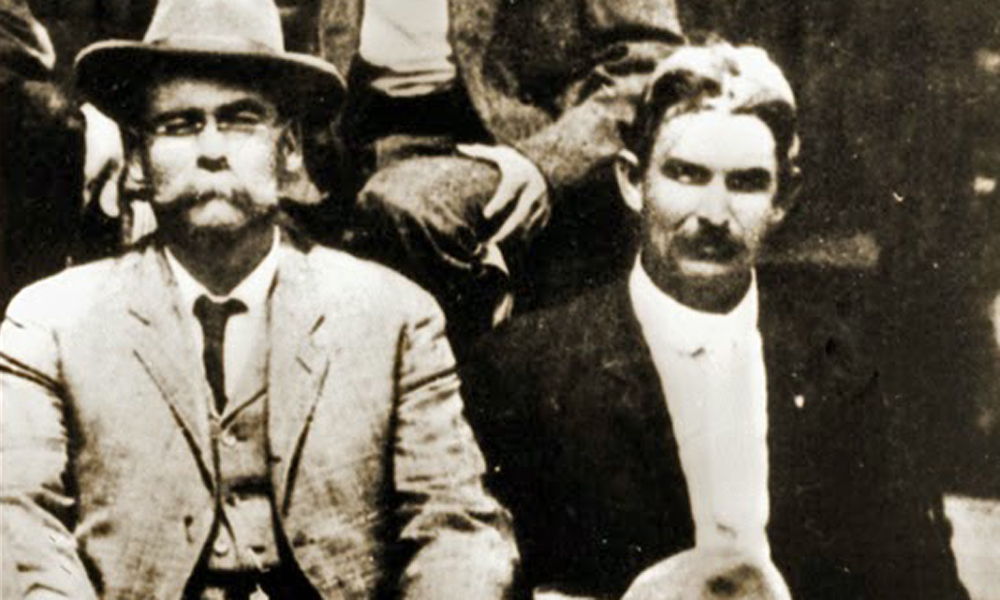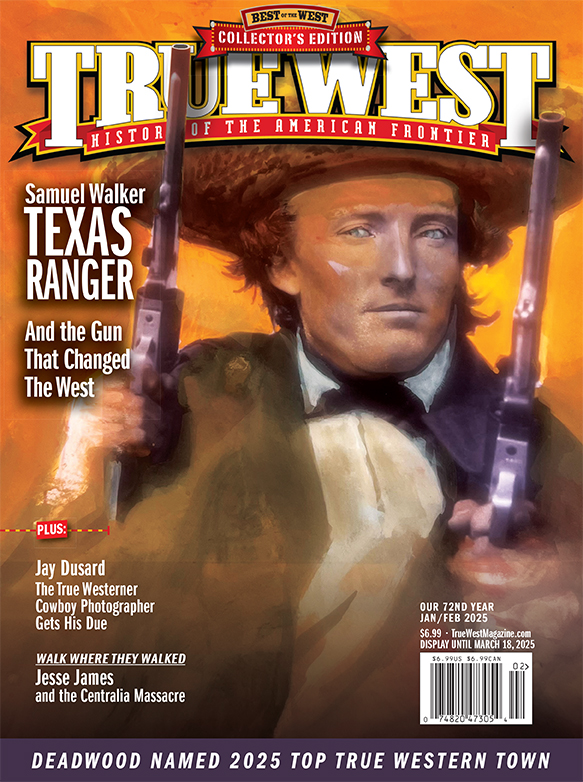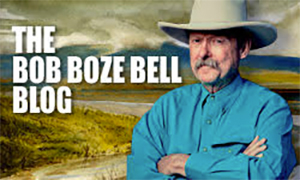On September 27, 1864, Bloody Bill Anderson and about 80 men took over the small railroad village of Centralia, looting stores and discovering a barrel of whiskey that they hauled out into the street. Wild enough when sober, they soon were roaring drunk. They robbed the passengers of a stagecoach and then stopped an express train on the North Missouri Railroad full of 125 passengers and 25 Union soldiers on furlough from Sherman’s army, which had recently taken Atlanta. The passengers were robbed and the soldiers stripped and brutally gunned down except for one sergeant who Anderson intended to keep as a possible hostage exchange. They then torched the train, tied down the whistle and sent it roaring down the tracks. They burned the depot and another train before leaving in the early afternoon.
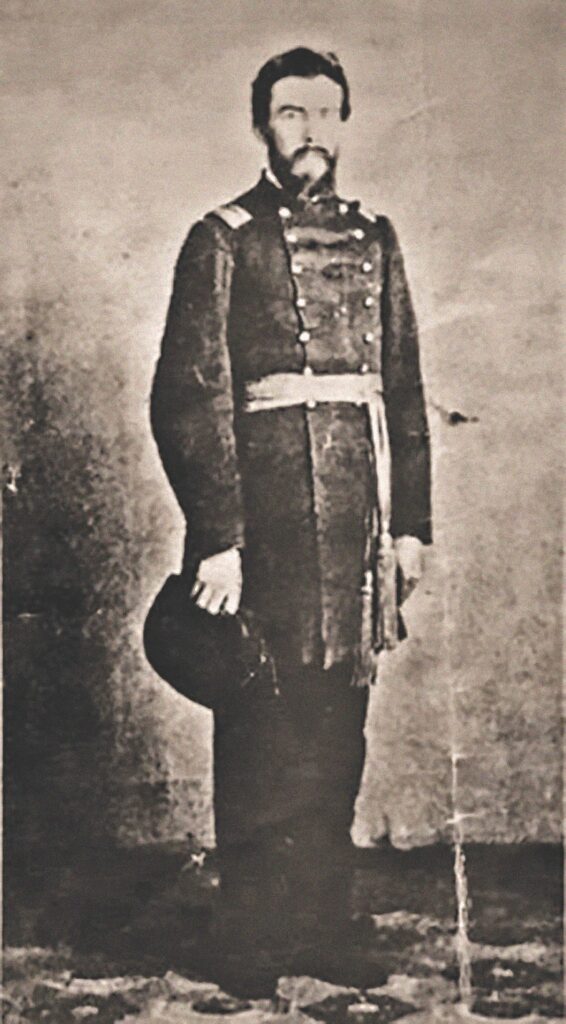
A detachment of about 147 Union troops from the 39th Missouri Mounted Infantry, led by A.V.E. Johnston, subsequently pursued Anderson and his men, closing in on the bushwhackers around 4 p.m. They were mounted on horses confiscated from “disloyal persons.” In other words, they were riding horses they had purloined from secessionist sympathizers. They were armed with muzzle-loading Enfield rifles, while the Bushwhackers were armed with multiple pistols.
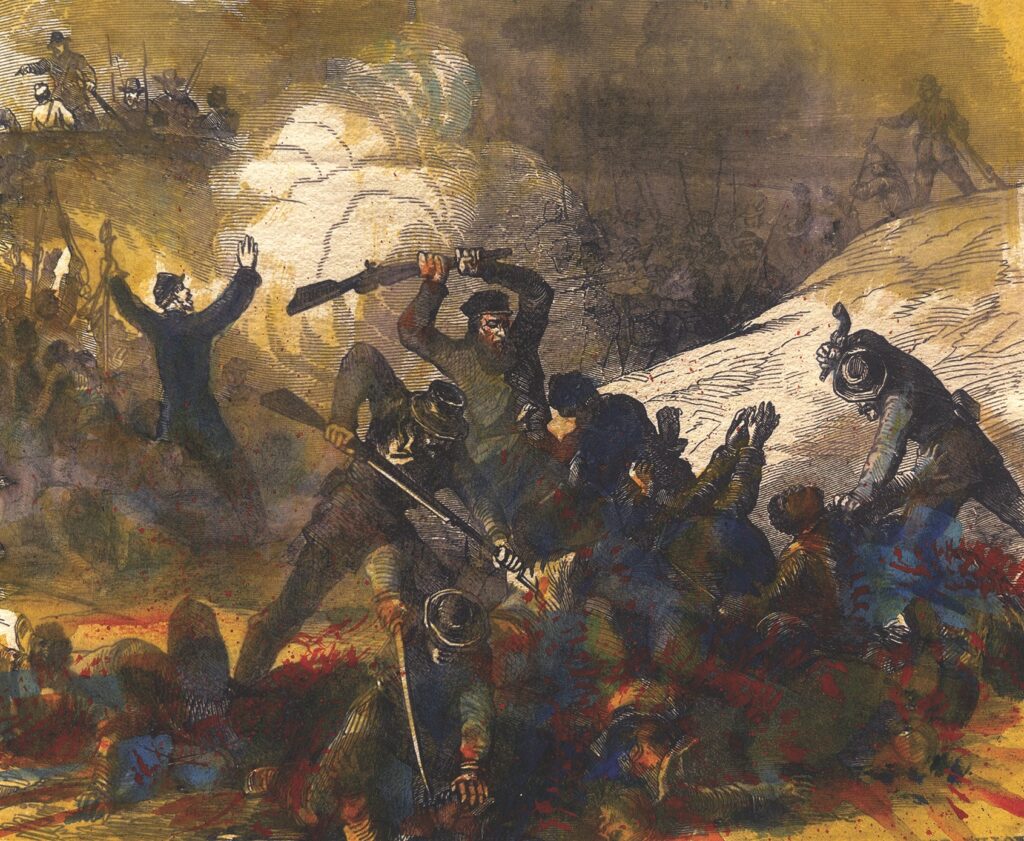
Mark Lee Gardner makes a good suggestion to bring accounts of the killing and “read them to the wind.”
Illustrations by Bob Boze Bell
Bushwhacker Dave Pool lured the detachment to an open field above a creek bottom about three miles southeast of Centralia. The Union troops dismounted and formed a skirmish line. The rebels, some 225 strong, came out of the trees on the jump, charging up the hill. Two bushwhackers were hit on the first volley from Johnston’s men, but most of the shots went high. The Federals never had a chance to reload.
It was over in a flash, and most of the Union troops were slaughtered, with Jesse James taking the claim for killing the commander, although Jim Cummins later stated that several in the group took that “honor.”
—Bob Boze Bell

“We were laying low on our horses, a trick the Comanche Indians practice and which saved our lives many a time.” —Frank James
Like many preserved Civil War battlefields today, the killing ground near Centralia, Missouri, hardly conjures the confusion and terror of battle. With friend Bob Boze Bell, I visited the historic site for the first time on a mild spring day last year, and the place was serene and beautiful. A short walk through a band of timber along Youngs Creek opened onto a low hill covered with lush grass. The green springtime foliage was so intense it almost glowed fluorescent.
I wish now that I had taken some of the accounts of that fight—butchery, really—and read them to the wind. They never fail to give me chills. More than 120 young men of the 39th Missouri Mounted Infantry (Union), mostly new and inexperienced recruits, slaughtered by the bushwhackers while running for their lives. The few who surrendered were promptly shot. So were the wounded. Then came the fiendish mutilations: bayonets thrust into mouths, scalps taken.
“The crimes of this guilty land will never be purged away but with blood.” —John Brown
Why was the Union commander, Major A.V.E. Johnston, so bullheaded? He’d supposedly been told at Centralia that Bloody Bill Anderson had between 300 and 400 men, and yet Johnston refused to believe it, insisting that the notorious guerilla chieftain only had 80 to 90. What were Johnston’s thoughts, then, as he saw the horde of yelling bushwhackers emerge from the timber? Did he even have time to think as his men panicked and broke before the tide of long-haired hellions? And did he lock eyes, however briefly, with his probable killer, a teenager named Jesse James?
Just hours earlier, Johnston and his men had seen the bodies of nearly two dozen soldiers at the Centralia depot, Union veterans who’d been on leave and were returning home. Anderson’s bushwhackers had forced the soldiers to strip and then gunned them down. (The bushwhackers, famous for wearing Union garb to fool their enemies, didn’t want bullet holes and blood to spoil the uniforms.) But Anderson’s men weren’t finished. They hacked the bodies with large Bowie knives and then sliced away the scalps. The horrific sight that greeted Johnston and his command must have been at the forefronts of their minds as they looked at death galloping toward them from three sides.
No, there was nothing peaceful or beautiful about that open field 160 years ago. But I’m thankful it’s been preserved, and I’ll return again as I research my next book: Bushwhackers: The Civil War of Jesse and Frank James and the Birth of the American Outlaw. This time I’ll indeed read those disturbing accounts to the wind, and I’ll reflect on a tragic, brutal war that turned men and boys into savages.
—Mark Lee Gardner

If You Go
About 65 miles away is a place where visitors can get an understanding of the life and culture of central Missouri on the eve of the Civil War: Arrow Rock State Historic Site. One of my favorite places, by the way.
Movie to watch before visiting: Ride With the Devil (1999)
Book: Bloody Bill Anderson: The Short, Savage Life of a Civil War Guerrilla by Albert Castel and Thomas Goodrich (1998)
Soundtrack to play: Johnny Whistletrigger: Civil War Songs from the Western Border by Cathy Barton, Dave Para and Bob Dyer. Available on CD for $12 at this website: https://bartonpara.com/bp/index.php/music/johnny-whistletrigger/.
—Mark Lee Gardner

